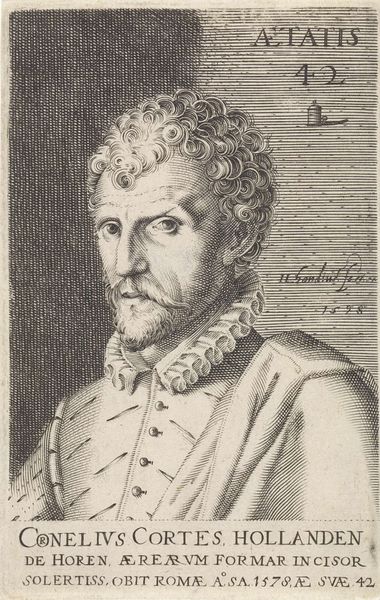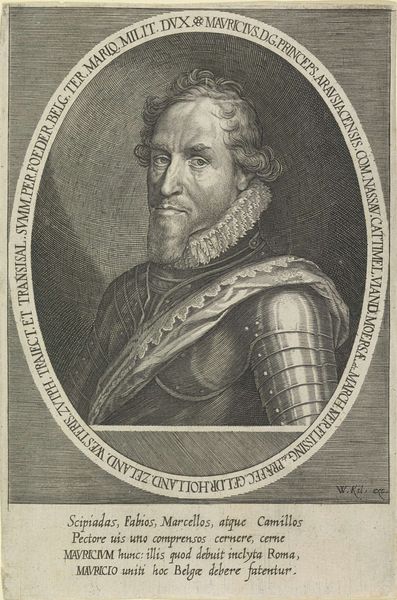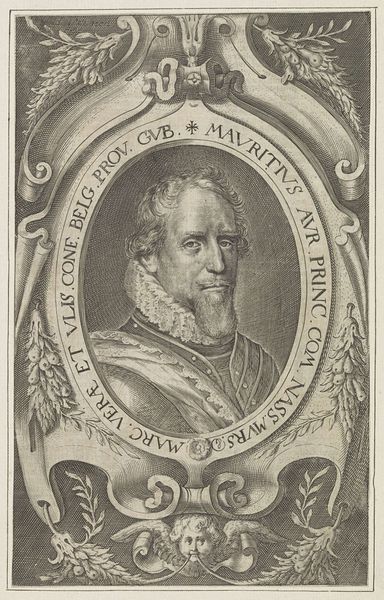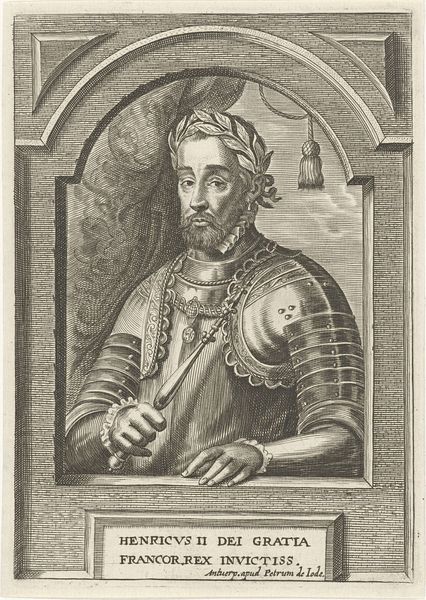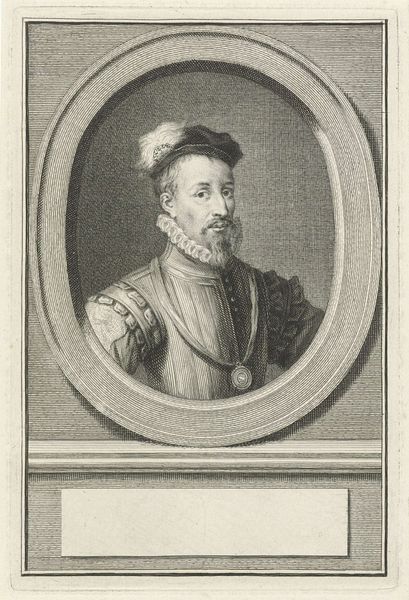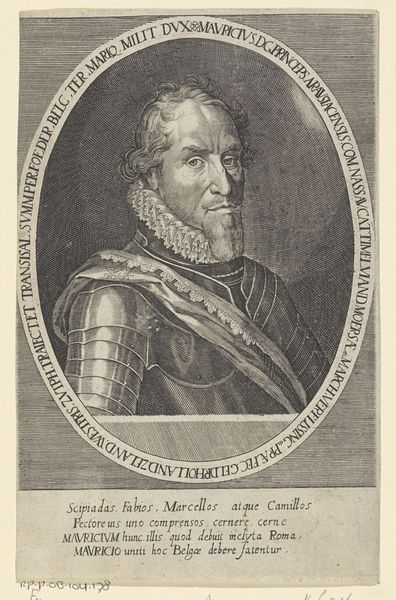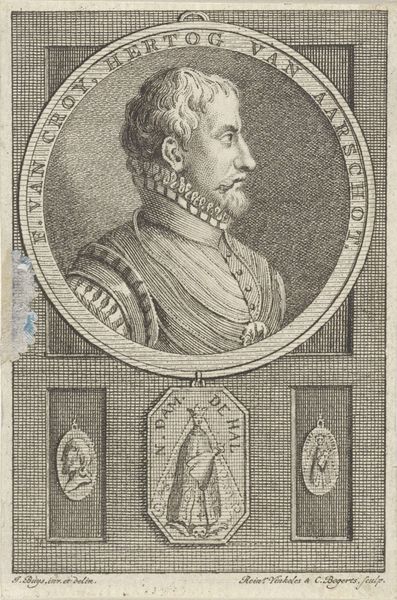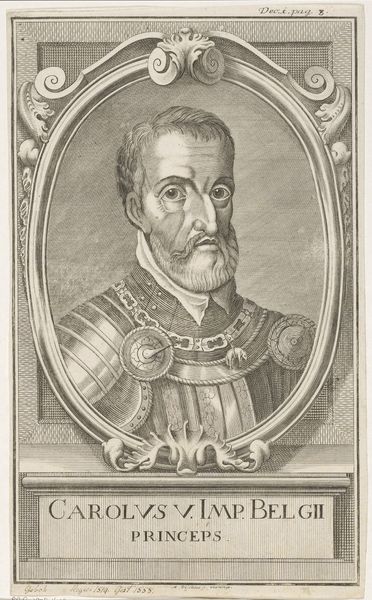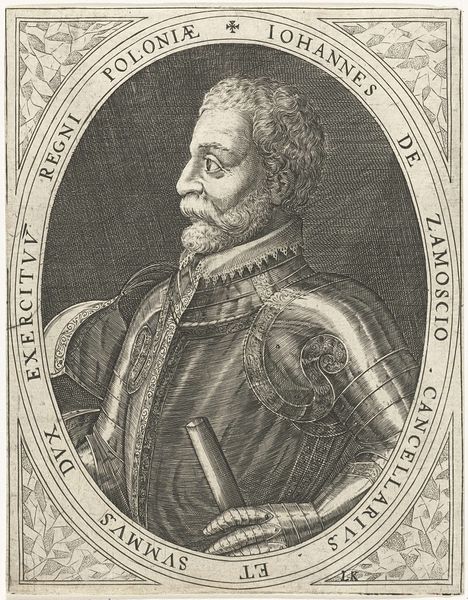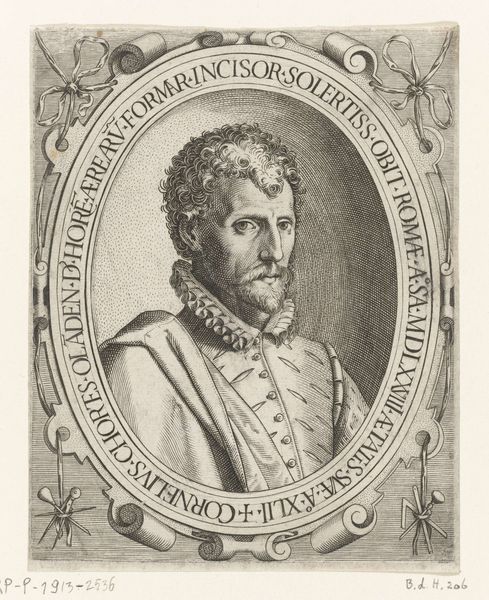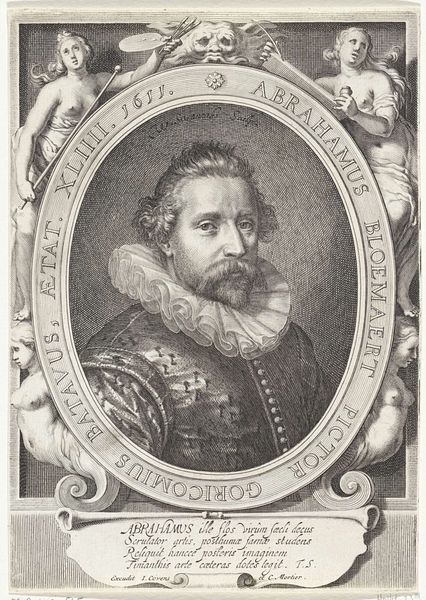
Dimensions: height 153 mm, width 125 mm
Copyright: Rijks Museum: Open Domain
Editor: Here we have a print from after 1578 titled "Portret van Cornelis Cort." It's an engraving, so incredibly detailed, but stark in its monochrome. It depicts a man, presumably Cornelis Cort himself, framed in an ornate oval. What strikes me is the labour involved in creating such minute detail by hand. What’s your take? Curator: It's essential to understand the historical context to truly appreciate this engraving. Consider the rise of printmaking during the Renaissance and Baroque periods. It wasn't merely about art; it was about disseminating knowledge, crafting propaganda, and, critically, establishing and broadcasting social status. Who had the time, resources, or skill to create or consume these? How were prints marketed, sold, and distributed? Think of the artist as a craftsman in a larger system. Editor: So, you're focusing on how it functions as an object within a socio-economic structure, rather than as just an aesthetic object? The mass production aspect, even then, is quite intriguing. Curator: Precisely. And examine the frame within the print – the decorative flourishes, the symbolic objects attached to the sides, each one represents power, trade, artistic achievement. Everything points to controlled systems of representation and social signaling. Editor: It makes you consider the intent behind creating portraits like these. Was it purely artistic expression, or was it a way to cement someone's place in history through mass reproduction and visibility? Curator: Both, to an extent, but it leaned heavily toward constructing a certain legacy. Remember that paper, ink, and the engraver's labor all had significant costs associated with them. The means of production were tied to commerce and the control of resources, shaping how the artwork functions as a cultural commodity. How does considering it as a commodity change your perception of the piece? Editor: It does shift things. I was initially drawn to the image itself, the individual portrayed. Now, I see the print as a document, not just of a man, but of the systems that allowed his portrait to be created and disseminated so widely. Thanks, that really adds a layer I hadn’t considered. Curator: Glad I could highlight that. Every work tells a story, but also hides a system.
Comments
No comments
Be the first to comment and join the conversation on the ultimate creative platform.
